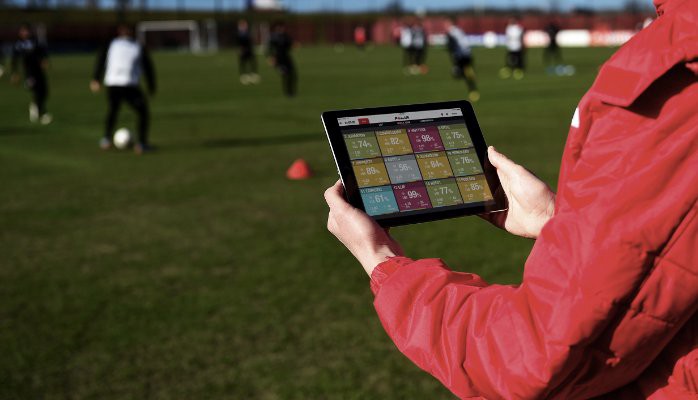Students use computers and mobile devices to type up their English paper or watch a documentary for History class, so why not incorporate technology in a less obvious way that is equally as impactful?
Assessment of student performance and differentiated teaching to help students reach their full potential is as essential a component to physical education as it is to other core competencies such as math, science and language arts. Across the curriculum, students receive grades and feedback based on the effort they put into learning and physical education should be no different.
When it comes to physical education, teachers of course have standards and rules to adhere to when assessing their students. There are five national standards and multiple other benchmarks, which not only include physical performance but also physiological knowledge and application. Physical education teachers rely on traditional curricula to teach concepts and while they can incorporate metrics such as ability, speed and finish times into activities for assessment, they don’t have a realistic grasp on performance. Differentiation and determining individual performance becomes difficult without the true indicators technology can bring to the table.
Integrating Technology to Physical Education
While it may be a less obvious use case of technology in educational settings, there are infinite benefits from integrating fitness technology into the classroom as a way to support student success. Wearable technology provides invaluable data that enables physical educators to truly assess their students based on metrics such as heart rate average, heart rate max, time accumulated in target zones and much more. This technology and data-based approach allows teachers to objectively identify the various levels of performers to differentiate teaching, and empowers students to work toward individualized, attainable goals for improvement.
To put this into context, imagine two students running the same pace around the track. The first student might have a light sweat yet hardly be putting in effort. The second student, on the other hand, is breaking an intense sweat, breathing heavily and struggling to keep up. At face value, the first student is excelling and the second is under-performing. With data though, teachers can accurately and objectively assess these variations to see that the first student is not putting much effort into the activity and has far more potential to improve, while the other is putting in a huge amount of effort. Knowing heart rate can help make physical education accessible for all, by avoiding under or over training students.
Identifying High Performers
With nearly 40 years of experience in innovative physiological and sports science research, Polar continues to demonstrate the multiple ways their fitness technology can offer unique opportunities to identify otherwise hidden potential within student athletes. Meredith, an 11th grade student athlete, is a testament to how Polar’s insights can help students realize their potential and push themselves to achieve much larger performance goals.
Meredith’s soccer team was chosen to be a test school leveraging Polar’s heart rate technology. Data quickly showed that although Meredith was performing above her teammates in terms of speed and distance covered, her heart rate zone was far lower than the other players. Whereas Meredith’s teammates were often reaching their maximum heart rates in zone five, Meredith was performing the same activities in zones three and four, not even approaching her maximum heart rate. Therein lies the opportunity. Meredith had the potential to perform harder, push herself to go faster for longer periods of time and truly have a stellar performance on the field.
Because this data helped Meredith and her coach to realize this potential, she began to train differently and play differently in practice and during games. Meredith found that she could last much longer on the field, go faster than other players and not hold back for fear of over-exertion. She has since began to play the game at an elevated level, which has opened opportunities for her to play D1 soccer out of high school.
Meredith’s story is one of thousands. There are professional sports teams, health clubs, school districts and more that are harnessing this data and truly helping athletes, students and the ordinary consumer realize their true potential and push them to achieve goals they hadn’t realized were possible.
Data and analytics have and will continue to drive sports and fitness forward, and there’s no reason it shouldn’t apply in the educational setting as well. It’s stories like Meredith’s that demonstrate the possibilities of integrating fitness technology into physical education. We encourage administrators and physical educators to learn more about how integrating fitness technology can improve classrooms, and seek the tools they need to ensure their students are not only accurately assessed, but also offered the opportunity to reach their full potential.
Originally published at medium.com


